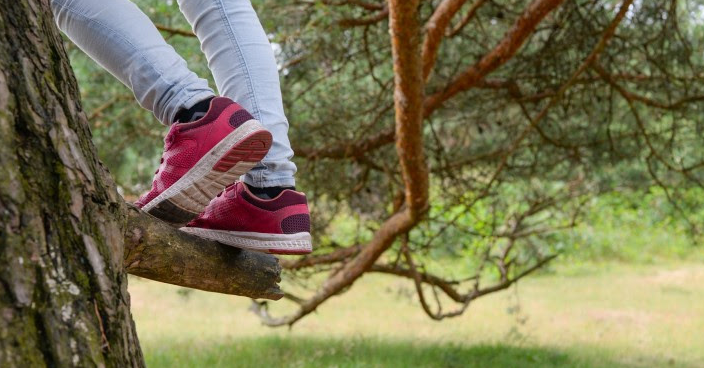Pining for Outside During an Indoor Summer
Sigh.

Lisa Van Dusen/For The Hill Times
July 29, 2020
One of the many ironies of life in this pandemic is that, while nature is probably the safest place for us, our default retreat into quarantine has us pining for it. If every summer has a Beach Boys theme song, this year’s is the oddly aberrant hermit lament, In My Room.
The Canadian Parks and Wilderness Society (CPAWS) released a report recently touting the therapeutic benefits of nature as a key component of any COVID-19 recovery plan. (Does the term conflict of interest not mean anything anymore?)
Whether you espouse the Shakespearean paean, “Our life, exempt from public haunt, finds tongues in trees, books in the running brooks, sermons in stones, and good in everything,” or his more pandemic-pertinent “One touch of nature makes the whole world kin,” it’s hard to argue with CPAWS, despite an acronym that makes them sound like that Canadian canine cartoon show the White House prematurely pronounced dead last week.
For most of my adult life, I’ve hewed to the Fran Lebowitz view that “The outdoors is what you must pass through in order to get from your apartment into a taxicab.” But as anyone who grew up in the country knows, you never quite lose the hankering to climb a tree if it’s been too long.
When I lived in New York years ago, I was much closer to an acceptable selection of climbing trees than I am now. We lived on the upper-Upper East side, just off Second Avenue, between Elaine’s and Spanish Harlem. Central Park, Frederick Law Olmsted’s monument to urban tree-climbing, was a 10-minute walk. In downtown-adjacent Montreal, Olmsted’s local masterpiece, Mount Royal Park, isn’t quite as convenient. The view out my window is of other peoples’ windows.
As a kid in what was once the summer-cottage enclave of Wychwood, in the capital-commuter town of Aylmer on the Quebec side of the Ottawa River, my physical universe was bordered by the CP tracks up the hill and the river in the other direction (it wasn’t really about blocks—in the deciduous-coniferous jungle of Wychwood, the roads were unpaved and tarred in summer until I was seven … I thought sidewalks were terribly glamorous).
It was a small world of climbing the front-yard willow and patrolling a riverfront whose ecosystem was our buzzing, skittering David Attenborough domain; of multiple cats and dogs, seven bantam chickens and one neighbourhood-menace, analog-alarm bantam rooster; one over-domesticated, slothful Arctic hare named Harold; and, for a sublime, surreal summer when I was eight, a spider monkey named Sidney (cue The Way We Were monkey montage).
It was also a bigger world of two languages—English at home and French at school—and a fairly ecumenical, pre-internet cocktail of cultural influences from Wayne & Shuster to Johnny Carson, Julia and Carol Burnett, The Brady Bunch and the Jackson 5, to Gabrielle Roy, René Simard and the British books and comics my father picked up at WH Smith’s on Sparks Street on his way home from the Hill; Enid Blyton, Playhour & Robin, and Judy.
Some summer nights, a white bed sheet would be nailed to the back of the house, the neighbours would drag their duct-taped lawn chairs over, popcorn would be popped and the film projector would be finessed into submisson by my Uncle Chooky, a mechanical virtuoso who lived in a log cabin next door. Chooky, who had been deaf from birth and could read and write English, French and German, was the projectionist at the Aylmer cinema long before I — the youngest of seven — was born. When television had closed the movie theatre, he’d inherited a trove of American comedy, cowboy and animated shorts. W.C. Fields, Charley Chase, Laurel and Hardy, Abbott and Costello, Hopalong Cassidy and Steamboat Willie all lived, larger than life, in our rural Quebec backyard on balmy Saturday nights.
Decades later, on vacation in a place as far away from the river as I’d ever imagined while consulting Rand McNally on where in the world I could get to on a raft from the bottom of Butternut Street, I was walking along train tracks with a boyfriend. If you didn’t spend an early summer learning to run on train tracks, you may not know this, but it’s not as easy as it sounds. The wooden ties are laid at beats that confound both easy single- and double-stepping, so there’s a learning curve to it, like dancing. Turns out, it’s a procedural-memory skill that comes back, astonishingly, like you’re 10 again.
Like climbing a tree. Sigh.
Lisa Van Dusen is associate editor and deputy publisher of Policy Magazine. She was a Washington columnist for the Ottawa Citizen and Sun Media, international writer for Peter Jennings at ABC News, and an editor at AP in New York and UPI in Washington.
